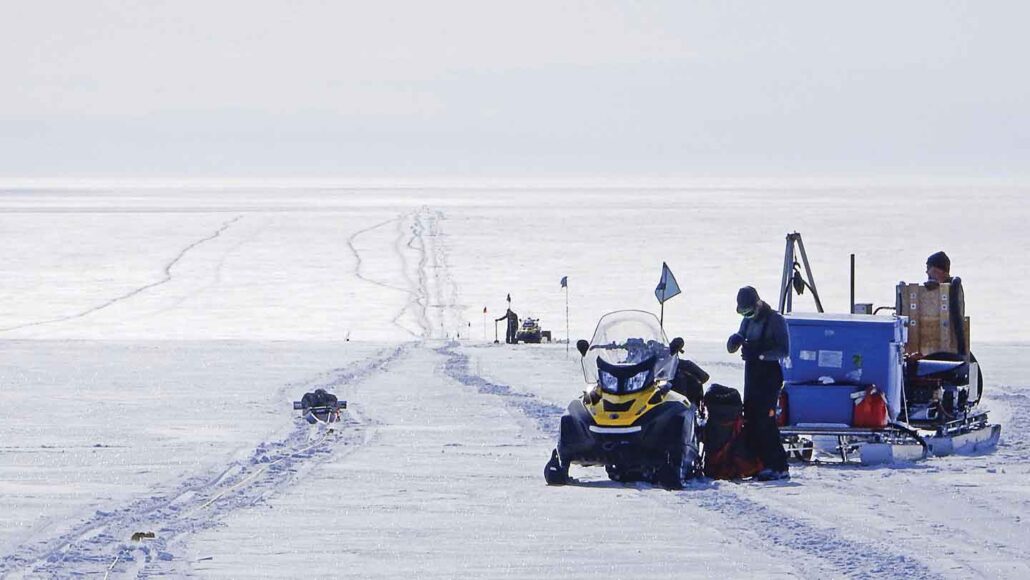Questions for ‘A natural ‘cathedral’ lurks deep under Antarctic ice’

Using ice-penetrating radar, scientists discovered a massive hidden cavern beneath the lower Kamb Ice Stream in West Antarctica. A subglacial river melted the ice above it, carving out the enormous structure.
H. HORGAN
To accompany ‘A natural ‘cathedral’ lurks deep under Antarctic ice’
SCIENCE
Before Reading:
- If you follow a river to where it begins, what might you find? Where will you likely be if you follow a typical river to where it ends?
- What is a cave? What is the difference between an ordinary cave and an ice cave? What role might water play in the formation of an ice cave? What changes might cause an ice cave to get bigger over time?
- What is density? Use the concept of density to explain why ice floats on water.
During Reading:
- What “meanders” 700 meters (2,300 feet) below the surface of the Kamb Ice Stream?
- Describe what the researchers’ camera observed when it dropped 502 meters below the Kamb Ice Stream in late 2021.
- Why is the global climate causing the icy world described in this story to change rapidly?
- What do the scientists learn by measuring pulses in the subglacial river’s flow?
- Approximately how many lakes have been mapped so far beneath Antarctica’s glaciers?
- Why do some subglacial rivers “run uphill”?
- What did Arran Whiteford and his team map using ice-penetrating radar?
- How does the density of water in under-ice rivers compare with seawater’s density? How does this density difference cause what the story describes as an “underwater waterfall” effect?
- What did scientists discover on December 29, 2021, at the bottom of the under-ice river bed that left them “astonished”?
- From where did Gavin Dunbar collect mud cores? These mud cores alternated between “chunky gravel” and “fine mud.” What does Dunbar believe caused the chunky gravel layers? What does Dunbar believe caused the fine mud?
After Reading:
- Europa — one of Jupiter’s many moons — is widely regarded as one of the best places in our solar system to look for extraterrestrial life. Evidence suggests a thick shell of water ice encapsulates this moon. Images taken by spacecraft and telescopes reveal Europa’s glossy ice-like sheen, with a capillary-like pattern, and mysterious plumes erupting from the surface. These patterns and plumes are believed to be evidence of liquid water leaking onto Europa’s surface from a vast, under-ice ocean. Imagine a future scientist is on a mission to land on Europa’s surface and investigate that deep, hidden ocean. Why might this scientist be interested in reading the studies presented in this story before studying Europa? What research techniques used in analyzing Antarctic “rivers” might help this scientist explore Europa? Now imagine you are this scientist. List three things you would want to measure. Then, briefly explain why these measurements would be of interest.
- How might studying life in places such as the “black, sunless waters” described in this story help scientists search for life on other planets?
- How might our changing climate affect these under-ice rivers and structures over the next few years? Explain your answer. Use evidence from this story to support your prediction.